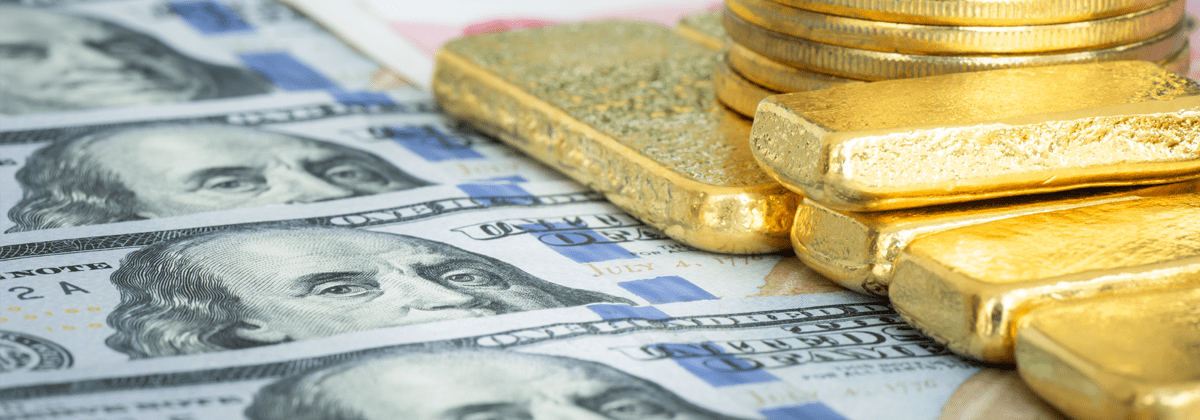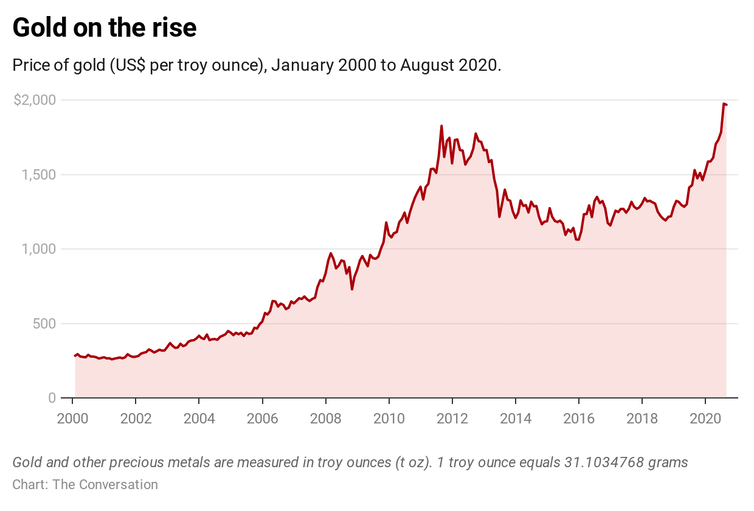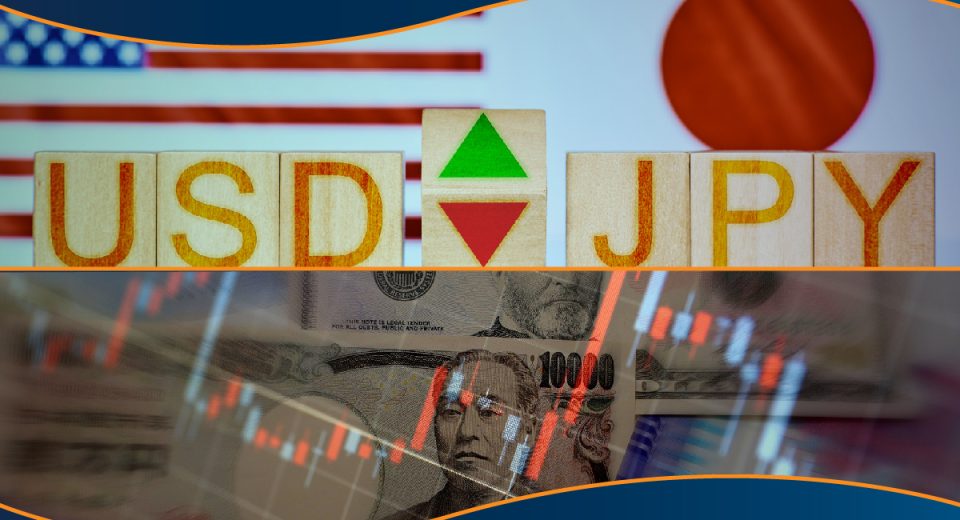Choosing Between Gold and US Dollar to Hedge Risks in Your Portfolio

During a year marked by an unprecedented level of uncertainty, deciding on whether an asset would prove to be a safe haven has become unpredictable. The traditional safe havens of gold and the US dollar saw volatility like very few times in history. On the other hand, stocks, which are usually considered riskier assets, flourished, with the Dow even hitting an all-time record high for the second time in a single year, closing at 30,218.26 on December 4, 2020.
That’s not all, Bitcoin not only beat its 2017 high, it surged beyond $27,000 on December 27, 2020. This definitely gives us pause regarding whether it is time to relook at safe haven assets to hedge portfolio risks. Of course, the never-ending Covid-19 pandemic, resurgence of cases and even a new strain of the virus has kept panic, or at least, confusion, alive and thriving in the minds of investors.
Is Gold the Best Option to Hedge Risks?
“Gold is a way of going long on fear,” Warren Buffett once famously said. Investors have remained in love with gold for centuries now. A large part of this love affair has to do with finite supply of gold, which makes it a rare and therefore precious commodity and store of value. This limited supply was further impacted by the prolonged lockdowns and mine closures, leading to a substantial decline in production. On the other hand, there was also a sharp decline in demand, especially from the jewellery sector.
Historically, gold fulfilled an important monetary role, with the gold standard leading central banks to hold gold reserves to back their domestic currencies. Even today, central banks hold on to significant gold reserves, with the World Gold Council reporting that 17.2% of all gold mined through history being held by central banks and governments in the form of coins or bullion. In fact, central banks have been net buyers of gold over the past decade, continuing to use the precious metal to diversify their reserves and hedge risks.
Gold is also seen as a hedge against inflation, given that a rise in the cost of goods and services tends to impact the value of the domestic currency. In addition, when central banks print more money, in an attempt to stimulate their economy, investors fear inflation and therefore flock to gold. On the other hand, gold tends to hold on to its value over the long term, which makes it a great safe haven asset.

Image Source: The Conversation; https://theconversation.com/in-gold-we-trust-why-bullion-is-still-a-safe-haven-in-times-of-crisis-144567
Gold has seen a record bull run through the year of the pandemic, reaching record high prices, past the high set in August 2011. Even Warren Buffet appeared to soften his antagonistic stance on gold, with Berkshire Hathaway acquiring a stake worth $565 million in the second largest gold mining company in the world, Canada-based Barrick Gold Corporation.
The price movement of gold has been fairly predictable through history, rising during periods of economic uncertainty, while other assets have declined. The only time that the metal deviated from this traditional movement was in March 2020, when the global stock markets crashed in the aftermath of Covid-19 being declared a pandemic. This only highlights the degree to which investors were gripped by fear and uncertainty, with many selling their gold ownership to cover for losses in other holdings.
The Case for the US Dollar to Hedge Risks
When the uncertainty of the coronavirus pandemic took hold of investors in March 2020, the risk averse ones flocked initially to forex and the US dollar. The US Fed cut interest rates to zero in April, which would have made the US dollar attractive for carry trades and funding. The safe haven status of the greenback took it to a 3.5-year-high in March, even as Covid-19 spread through the US.
But that was short-lived. The world’s reserve currency dipped to a 27-month low in August, against a basket of currencies, with the dollar index plummeting to a dismal 92.477. Several analysts attributed this dip to the political uncertainties in America, as well as to the ongoing stimulus stalemate.
However, despite the US seeing the maximum number of coronavirus cases through 2020, the greenback did not lose its safe haven status completely. After all, the USD does not tend to be as volatile as emerging market currencies. In addition, global central banks maintain reserves of US dollars, while the greenback is also the most used currency for international transactions. There is more than $1.8 trillion in circulation across the world, as of December 2020.
In addition, the US dollar has acted as a safe haven, rising during the market turbulence of March 2020. The currency did swing downwards in April and May, with lockdown across the world leading a slowing of the Covid-19 spread, which brought the risk perception of investors from the peak levels seen in March.
Having said that, the USD has been more volatile than usual in 2020, weakening as lockdowns were eased and various protests and social unrest led to a resurgence of cases across the US, starting in June and continuing through September. Other contributing factors to the dollar weakness have been the faster recovery and stimulus measures initiated by the EU and Asian economies. Asia and Europe were able to curb the spread of the coronavirus more effectively than the United States, which helped the asset values in these regions to rise.
Unfortunately, economists expect significant issuance of US government debt going forward, which would sustain a downward pressure on the world’s reserve currency. In such situations, it could become difficult to incentivise foreign investors to add to their USD holdings, unless the Fed decides to raise interest rates. However, since interest rates are likely to be maintained at the current levels for some time to come, the USD is likely to remain weak over the next few years.
The Bottom Line
Gold is priced in US dollars and tends to move in the opposite direction of the greenback. This is because a stronger dollar means that it would take fewer USD to buy an ounce of gold. And, with the USD expected to remain subdued in the coming years, gold is likely to gain greater prominence as a safe haven.
So, while both the US dollar and gold have been very effective safe haven assets with which to hedge portfolio risks, the circumstances in the financial markets lead to one of them winning over the other. It is, therefore, crucial to stay updated with market dynamics and use analytics effectively to make informed risk management decisions.







